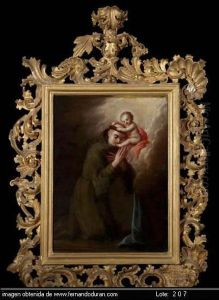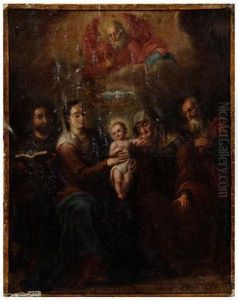Nicholas Rodriguez Juarez Paintings
Nicolás Rodríguez Juárez was a notable Mexican painter and an important figure in the Baroque art movement in New Spain (colonial Mexico). Born on July 18, 1667, in Mexico City, he was part of a dynasty of artists, being the son of the painter Antonio Rodríguez and the grandson of the prominent artist José Juárez. His family background provided him with a rich artistic heritage and a strong foundation in the arts from an early age.
Rodríguez Juárez received his artistic training from his father and was heavily influenced by his grandfather's style. He became an accomplished painter in his own right and was known for his religious works, including altarpieces and retablos for churches, as well as portraits of important figures of his time. His work is characterized by the use of dramatic light and shadow, a hallmark of Baroque art, as well as a keen attention to detail and a rich color palette.
Throughout his career, Rodríguez Juárez held various prestigious positions, such as being an official painter to the viceroyalty and a member of the painters' guild, which indicated his recognition and success as an artist. He also played a significant role in shaping the artistic landscape of New Spain by teaching and influencing younger artists.
Nicolás Rodríguez Juárez's contribution to Mexican art history is significant, as he represents the culmination of the Mexican Baroque style and his works are considered some of the finest examples of colonial art in Mexico. His legacy continued through his students and descendants, who maintained the family's artistic traditions. Rodríguez Juárez passed away on May 31, 1734, in Mexico City, leaving behind a body of work that continues to be studied and admired for its beauty and historical value.

